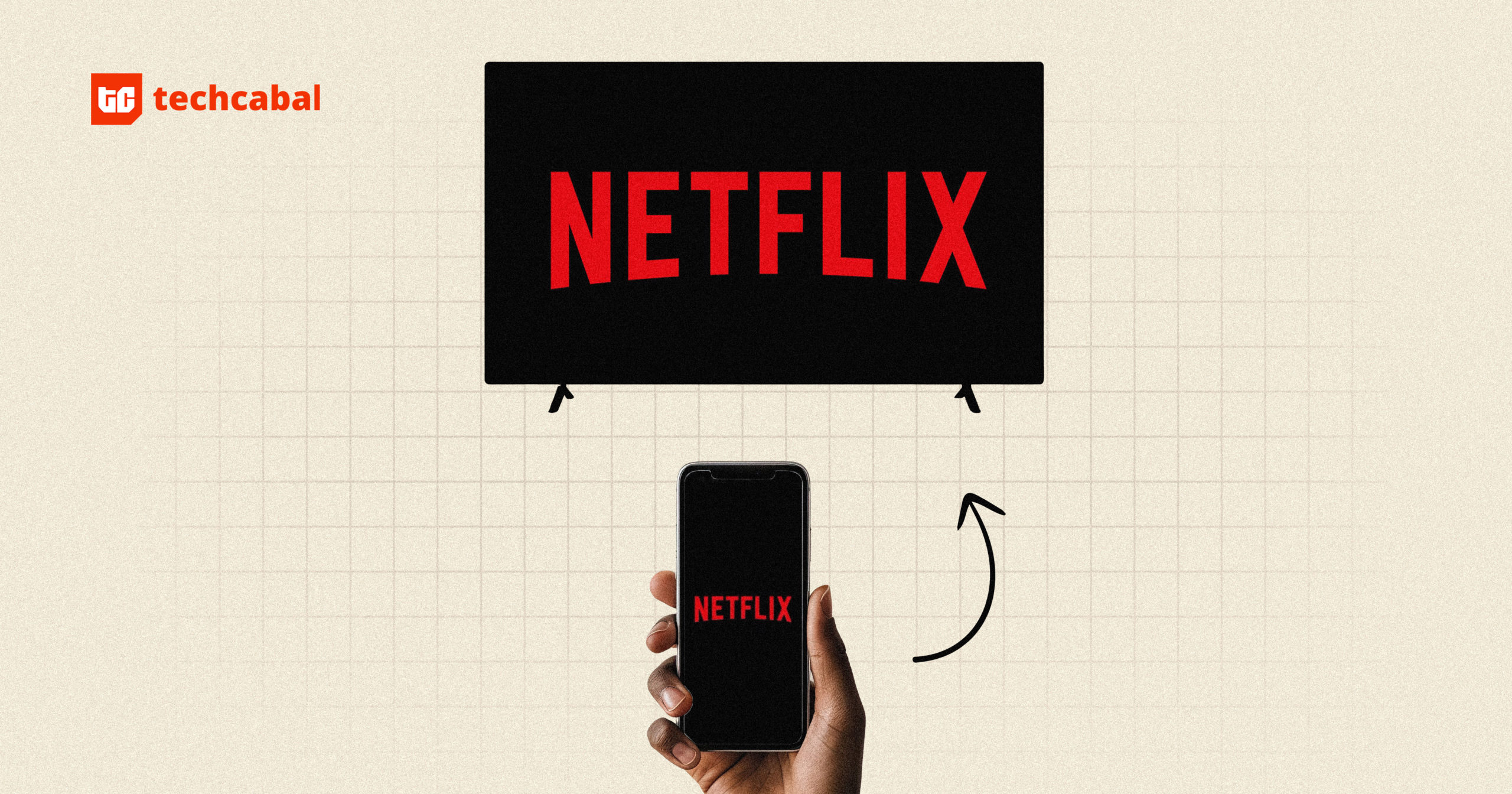A marketing career path is one of those things you simply cannot confine to strict, narrow boxes. It’s one of the few fields where your creativity, strategy, and leadership skills are just as important as your technical skills. Combined, they can shape real outcomes and serious revenue for your organization.
Some of the world’s most successful marketers have had unorthodox starts to their careers. You might start out writing content for a local brand and end up leading a global marketing strategy for a tech giant. Or maybe you discover you’re great at managing projects, and your career pivots into marketing operations or analytics.
Whether you’re building viral campaigns, decoding customer behavior, or launching products across digital channels, what matters most isn’t where you begin, but how well you:
- Build a foundation in the right marketing skills
- Recognize opportunities in every marketing job you take
- Stay adaptable as the marketing field evolves
This guide will take you through every step of a marketing career, from entry-level roles to executive leadership and the coveted Chief Marketing Officer (CMO) title, so you can plan your next move with confidence.
🚀 Bonus: We’ll also introduce you to the perfect tools to chart a blazing marketing career path, give you free career planning templates, and share the stories of global marketers.
⏰ 60-Second Summary
Not sure how to grow in marketing or what roles lead to leadership? Here’s how to map a marketing career path that actually works:
- Understand the five key stages of growth: from marketing coordinator to chief marketing officer
- Build real experience early on: by mastering digital channels, tools, and strategy basics—even without a formal title
- Move from execution to leadership: by developing skills in performance marketing, team management, and cross-functional alignment
- Learn from top CMOs: like Morgan Flatley and Bozoma Saint John, who scaled impact through clarity, creativity, and strategic vision
- Work smarter at every stage: using tools like Tasks, Docs, Dashboards, Automations, Chat, and Brain to manage campaigns, teams, and growth
Bring structure to your marketing goals and stay ahead in every role, from day one to director.
Marketing Career Path: How to Grow from Beginner to Expert
How to Begin a Career in Marketing?
You don’t need years of experience to start in marketing, but you do need to understand what the field expects from day one. The best way in? Build real skills and show that you can apply them in action.
Start with core skills and channel knowledge
Before you apply anywhere, you’ll need a working grasp of how marketing teams operate and which skills make you valuable.
- Learn how different channels connect: content marketing, email marketing, social media platforms, and search engine optimization all feed into larger marketing goals
- Understand strategic basics: how campaigns are structured, how audiences are segmented, and how results are tracked
- Get hands-on with tools: even as a marketing coordinator or assistant, you’ll be expected to manage calendars, write drafts, or work inside CMS and analytics platforms
- Strengthen transferable skills: communication, data analysis, and collaboration aren’t optional but the baseline in every marketing role
💡 Pro Tip: We have charted the entire marketing career path for you. Continue reading to understand how to build your marketing career.
Build real experience, even without a full-time role
You don’t need a formal title to get noticed. What recruiters and hiring managers look for is initiative.
- Run a small social media account for a friend’s business
- Draft email campaigns or blog posts for a community project
- Analyze competitors or run surveys to practice market research
- Build a mini content plan for a product you like and showcase your thinking
Experience doesn’t have to come from a marketing agency or corporate job. If you’ve done the work(even independently), you’re already ahead of many entry-level applicants.
The Marketing Career Path
There’s no one way to grow in marketing but most professionals move through five core stages, each with its own set of skills, responsibilities, and impact.
Here’s how the typical marketing career ladder is structured:
- Entry-level roles: Titles like marketing associate or marketing coordinator where you gain hands-on experience with tools, content, and basic strategy
- Mid-level specialists: Positions such as digital marketing specialist or social media manager focused on channel ownership and execution
- Team leadership: Roles like marketing manager or marketing director with responsibilities that span strategy, reporting, and people management
- Executive oversight: At the vice president level, you’re steering large campaigns, setting goals, and aligning with sales or product
- C-suite leadership: As a chief marketing officer, your role centers on vision, adaptability, and full ownership of the company’s marketing direction
You don’t have to follow this path exactly but knowing what each stage looks like makes it easier to move with purpose.
Step 1: Entry-level roles
This stage isn’t just about learning how to “do marketing”, it’s about figuring out what kind of marketer you want to become. Entry-level roles expose you to tools, teams, channels, and workflows, helping you shape a career path that aligns with your strengths.
Common entry-level job titles
You’ll usually start in hybrid roles where execution meets exposure. Expect to find openings for:
- Marketing assistant or marketing coordinator
- Content marketing intern or associate
- Email marketing specialist (junior)
- Social media coordinator
- Marketing associate
You might run social calendars, proofread newsletters, draft product descriptions, or pull weekly analytics. None of it sounds glamorous, but it’s how most successful marketing professionals start.
Key responsibilities and learning opportunities
At this stage, you’re contributing to campaigns while absorbing how teams function. What you pick up here directly impacts your ability to grow into more strategic roles.
- Learn to spot patterns in campaign performance: Which subject lines work? Which blog formats drive traffic?
- Understand how marketing teams are structured: Who leads strategy? Who executes? Where does the product or design fit in?
- Manage workflows: Whether it’s updating project boards or coordinating with freelancers, execution builds project management muscles early
- Touch multiple channels: You’ll likely gain exposure to email marketing, content marketing, and social media, giving you a sense of where you might want to specialize
This is where you develop your rhythm, sharpen your instincts, and learn to ask better questions, which is the foundation of long-term marketing success.
Building a foundation in strategic planning and digital marketing
The smartest marketers don’t wait to become strategic, they start early by understanding how the work ladders up.
- Read through campaign briefs, not just your tasks
- Watch how feedback loops work between analytics, creative, and copy
- Start connecting tactical outputs to broader goals like brand management, lead generation, or search engine marketing
- Pick up the language: how your team defines success, tracks KPIs, and adjusts messaging based on data
You don’t need to lead yet, but you should be thinking like someone who will. That mindset is what moves you from support to standout.
Step 2: Marketing manager
This is where your marketing career starts gaining altitude. You’re no longer executing tasks handed down from above but setting direction, managing people, and making decisions that affect the entire campaign, not just your assigned piece of it.
Transitioning from entry-level to managerial roles
You don’t become a marketing manager just by doing your job well. This position belongs to you because you understand the bigger picture. At this stage, you’re expected to deliver results through others, not just by yourself.
What changes when you step into this role:
- You lead contributors: managing a marketing assistant or coordinator isn’t just about assigning work, it’s about developing talent, giving feedback, and coaching
- You become the campaign quarterback: instead of asking what the plan is, you’re shaping it like timelines, channel mix, messaging hierarchy, and creative direction
- Your visibility increases: your work gets reviewed by marketing directors or VPs, and your ideas start influencing business conversations
- Cross-functional communication becomes essential: you might work with sales on GTM launches, with product on positioning, or with finance on performance budgeting
This role forces you to stop thinking like a contributor and start thinking like an owner.
Developing advanced skills in online advertising and SEM
Most marketing managers are trusted with channel oversight and performance is expected.
You’ll likely own a slice of digital marketing that demands more than surface knowledge:
- Run search engine marketing campaigns with clear goals and budget constraints
- Monitor search engine results pages for visibility and positioning opportunities
- Manage external vendors or agencies for ad buying, paid social, or analytics
- Tie media spend to KPIs using marketing analytics dashboards and reporting tools
- Develop sharper messaging that reflects audience behavior across digital channels
You’re not just analyzing data but making calls that move spending, shape creativity, or shift audience targeting. This is also when many professionals start leaning into their strengths, some develop into brand managers, others into performance marketers or digital strategists.
The work gets more complex, but so does your impact.
Did You Know? The employment for marketing managers is projected to grow by 10% from 2020 to 2030, which is faster than the average for all occupations.
This growth is driven by the increasing use of digital platforms to reach customers.
Step 3: Director of Marketing
Becoming a marketing director is about managing more people and thinking in systems. This role places you at the intersection of strategy, performance, and people. You’re expected to scale campaigns, shape department goals, and create consistency across the entire marketing function.
Responsibilities of a marketing director
You’re now overseeing how all parts of the marketing strategy come together—from product launches to brand storytelling to demand generation. That means more planning, more cross-functional collaboration, and a lot more accountability.
- Lead integrated marketing campaigns: connecting content, paid media, email marketing, and product marketing into one unified motion
- Manage senior talent: including marketing managers, channel leads, and potentially a digital marketing specialist or social media manager
- Own quarterly and annual plans: aligning marketing goals with company-wide OKRs
- Report outcomes to leadership: tying campaign performance to pipeline, revenue, or market share
- Evolve the marketing strategy: refining messaging, audience segmentation, and channel mix as markets shift
This is where soft skills and strategic thinking become just as critical as performance metrics. Your ability to make decisions, communicate clearly, and connect marketing with business outcomes becomes the difference-maker.
Overseeing recruitment and team management
Hiring becomes one of your highest-leverage tasks. The team you build now shapes how the organization grows.
- Define job descriptions that reflect real needs, not vague expectations
- Identify missing skills and hire specialists to fill those capability gaps
- Create structure around roles, feedback cycles, and performance reviews
- Coach mid-level managers on team development and cross-functional alignment
- Build a culture within marketing teams, one that prioritizes clarity, creativity, and execution
You’re responsible for more than just expanding campaigns. You’re creating the conditions for your team to grow, take ownership, and drive results at scale. At this level, your success is reflected in how your people perform.
This is also where mentorship often begins, as you start shaping the next wave of marketing managers, brand strategists, and future directors.
Step 4: VP of Marketing
At the vice president level, marketing stops being a department and starts becoming a business driver. You’re responsible for aligning marketing goals with company-wide growth, managing directors across specialties, and turning vision into measurable results.
Leading marketing strategy and execution
At this level, your focus shifts from day-to-day campaign execution to building clarity, direction, and scale across every marketing function. The decisions you make directly impact revenue, market positioning, and brand perception.
- Define and own the overall marketing strategy: from demand generation and content to product marketing and brand
- Set quarterly and annual performance targets: tied to revenue, customer acquisition, and retention
- Drive high-level planning: coordinating with the CEO, COO, and heads of product or sales
- Oversee budget allocation across teams, tools, and channels
- Represent the marketing function in executive conversations and board-level reviews
This is where marketing becomes a lens through which the company evaluates success, especially in industries where growth is marketing-led.
Importance of aligning marketing with overall business goals
Your role as VP isn’t just about performance metrics, it’s about alignment. You’re expected to keep marketing initiatives in lockstep with company objectives and evolving market conditions.
- Collaborate on strategic planning: Connecting marketing with operations, finance, and product timelines
- Support revenue teams: Partnering with sales leadership to shape go-to-market motions and lead quality
- Prioritize data-driven decision-making: Using marketing analytics to steer budget and messaging
- Shape customer experience: Aligning brand tone, campaign cadence, and messaging across all touchpoints
- Adapt to changing priorities: Whether that’s shifting markets, competitive pressure, or organizational pivots
This is also where your leadership presence matters. You set the tone for how marketing communicates internally and externally. Especially across fast-growing marketing teams with specialized functions.
For many VPs, this role is the gateway to broader ownership, including marketing management at the C-suite level or eventually stepping into the chief marketing officer position.
Step 5: Chief Marketing Officer (CMO)
This is where marketing meets executive leadership. As a CMO, you’re shaping how the business competes, communicates, and grows. Every decision you make carries weight across departments, markets, and boardrooms.
The role and responsibilities of a CMO
At this level, your responsibility spans the entire marketing ecosystem, from brand to revenue, from product alignment to cultural influence. You’re expected to lead not just a team, but a vision.
- Oversee all aspects of marketing management: including content, product, growth, brand, and performance
- Lead cross-functional integration: aligning marketing with sales, operations, finance, and customer success
- Own executive communication: representing marketing in board meetings and investor conversations
- Set the long-term strategic direction: how marketing supports business goals across different industries, regions, and market segments
- Guide company-wide positioning: ensuring consistency across messaging, customer experience, and brand perception
You’re managing multiple directors, scaling systems, and making decisions that influence hiring, budgets, and quarterly business performance. This isn’t a promotion, it’s a shift in how you think, operate, and lead.
Strategic vision and leadership in marketing
CMOs are expected to see around corners. You’re anticipating shifts in technology, market behavior, and customer needs, then translating those signals into strategy.
- Shape the company’s marketing vision: one that’s adaptable, data-backed, and aligned with the CEO’s agenda
- Define what future-ready marketing teams look like: from structure and skills to tools and workflows
- Champion growth through strategic planning: tying together campaigns, innovation, and market expansion
- Lead hiring with intention: identifying emerging roles, building leadership pipelines, and investing in upskilling
- Prioritize organizational readiness: adopting scalable systems, AI-driven analytics, and marketing automation that future-proof the business
Soft skills matter more than ever here like your ability to unify teams, communicate under pressure, and lead with clarity, which determines how far your vision goes.
Adapting marketing strategy to changing market trends
No strategy stays relevant forever. At the CMO level, staying competitive means staying responsive.
- Rework go-to-market strategies as customer behavior shifts
- Evolve positioning to match cultural moments or technological disruption
- Invest in first-party data, agile planning, and channel diversification
- Revisit the career ladder inside your team to address missing skills or evolving marketing roles
- Bring in external partners, advisors, or even fractional leaders to accelerate transformation when internal expertise hits a ceiling
Career progression at this stage is about lasting impact. CMOs influence how organizations evolve, brands lead, and marketing earns its seat at the executive table.
Challenges in a Marketing Career
Marketing rewards adaptability but it also tests it constantly. Every stage of the career ladder comes with new friction points. What slows you down as a coordinator is different from what stretches you as a VP.
And while the challenges evolve, one thing stays the same—clarity is hard to hold onto when everything is moving.
Early-stage chaos: Too much to learn, no clear direction
When you’re starting, it’s less about pressure and more about noise. You’re juggling five tools, ten tasks, and endless feedback but no one’s telling you what actually matters.
- It’s easy to confuse being busy with being effective
- Feedback can feel conflicting, inconsistent, or incomplete
- You’re learning tactics but missing context like how your work fits into the big picture
Without strong guidance, it’s easy to burn out or plateau early.
Mid-level friction: Growing expectations, limited control
Once you hit specialist or manager level, you’re expected to lead but not always given the power to fix what’s broken.
- You’re held accountable for results, but reliant on others to deliver
- Collaboration gets messy across content, design, product, and sales
- Strategy shifts fast, and your execution plan often becomes outdated mid-cycle
This is when marketers either learn to manage up, out, and across or they get stuck in the middle.
Senior-level strain: Decisions under pressure
At the top, the challenge isn’t knowing what to prioritize, when nothing can wait.
- You’re balancing brand, growth, hiring, budget, and leadership—all at once
- Every misstep is visible, and often public
- Teams look to you for certainty when you’re still navigating ambiguity
📮 Insight: Nearly 88% of our survey respondents now rely on AI tools to simplify and accelerate personal tasks. Looking to generate those same benefits at work? is here to help! Brain, ’s built-in AI assistant, can help you improve productivity by 30% with fewer meetings, quick AI-generated summaries, and automated tasks.
Marketing leadership isn’t just about having the answers but holding the tension until the next right move becomes clear.
There’s no one-size-fits-all path in marketing. But the people who grow the fastest and stay relevant the longest always tend to follow the same playbook. They stay sharp, build strong networks, and use tools that help them work with more clarity and less chaos.
Here’s how to keep momentum on your side, no matter where you are on the ladder.
Stay sharp through continual learning
The marketing field moves fast. Algorithms shift. Tools evolve. Audiences change how and where they engage. And the only way to stay effective is to keep learning.
- Explore specialties beyond your current role; from brand management to product marketing
- Follow industry shifts in AI, search engine marketing, and automation
- Develop strategic thinking, not just tactical skills
- Consider formal education like certifications, a marketing degree, or even a master’s if you’re aiming for leadership
It doesn’t take hours a day. Just consistent curiosity.
Build visibility and meaningful relationships
Career growth doesn’t happen in isolation. Your network plays a direct role in your opportunities, mentorship, and long-term success.
- Reach out to marketers in different industries and levels to understand how they’ve grown
- Contribute to conversations online, whether through writing blog posts, sharing insights, or commenting thoughtfully
- Stay in touch with managers, peers, or collaborators who’ve seen your strengths in action
- Be someone others want to recommend, not just someone applying for roles
Strong relationships often open the right doors faster than a perfect resumé.
Work smart, not constantly
The biggest differentiator between good marketers and great ones isn’t talent—it’s how they manage their time, energy, and attention. As campaigns get more complex and expectations rise, working harder won’t keep you ahead. Working smarter will.
That’s where comes in. It’s a productivity system built for marketing teams who need clarity, speed, and results at scale.
Plan and execute with precision
Execution doesn’t mean chaos. With , your planning, deliverables, and documentation stay in sync so campaigns don’t derail midway.
- Use Tasks to map campaign timelines, assign responsibilities, and track deadlines across channels
- Build and maintain briefs, messaging guidelines, and content calendars inside Docs, where feedback lives alongside the work
- Ensure everyone, from content writers to stakeholders, knows what’s happening, when, and why
Eliminate bottlenecks
Manual updates and repetitive handoffs slow down good work. Automations keep momentum going without micromanagement.
- Trigger reminders, status changes, and approvals with Automations so your workflows run smoother
- Free up your time for more strategic thinking—not admin
- Reduce miscommunication between teams and accelerate reviews without follow-up loops

Track performance and progress
Data isn’t helpful if it’s scattered across tools. Dashboards give you visibility where and when it matters.
- Use Dashboards to monitor KPIs, campaign health, and team workload—all in real time
- Combine metrics from across initiatives to spot blockers or performance dips early
- Align teams around the same goals with visual, customizable reporting that doesn’t need a manual refresh


Collaborate smarter
When conversations are scattered across apps, context disappears. Centralizing communication and insights puts your team back in sync.
- Keep campaign feedback and team conversations focused using Chat—linked to the task, not floating in Slack
- Avoid back-and-forth by keeping decisions, documents, and updates in the same place where work gets done
- Summarize updates, brainstorm messaging, or surface past work instantly with Brain


Spotlight on Marketing Leaders
Not every marketing career follows a traditional ladder. Some professionals start as assistants. Others pivot from unrelated industries. But the ones who make it to the top? They learn fast, stay adaptable, and move with clarity, even in chaos.
Here’s how two marketing leaders built their careers from the ground up and what their paths can teach you.
Morgan Flatley: from brand manager to global CMO
Before she was leading global campaigns at McDonald’s, Morgan Flatley was navigating brand management at PepsiCo. Where she was working on localized campaigns with tight budgets and high expectations. She credits those early years with teaching her how to blend creative instincts with consumer data, a skill that proved critical later on.
Her rise was marked by key shifts:
- Early-career focus: obsessed with execution quality and customer insights
- Managerial growth: built strong cross-functional teams and learned how to lead through ambiguity
- Executive strategy: led McDonald’s through a brand refresh, balancing digital innovation with brand heritage
Flatley’s success is about scale and precision. She built her credibility by asking the right questions, spotting gaps early, and delivering results that aligned with long-term brand health.
Bozoma Saint John: making creativity a leadership skill
Bozoma Saint John didn’t climb the ladder quietly. She started in assistant roles at ad agencies, worked her way through brand management at PepsiCo, and later brought cultural storytelling into the spotlight at Apple Music, Uber, and Netflix.
What stands out in her career isn’t just where she worked but how she showed up:
- Early hustle: learned to lead without authority while managing live events and celebrity partnerships
- Strategic evolution: moved from execution to direction like owning how brands communicated emotion, not just messaging
- Leadership presence: advocated for inclusion, bold creativity, and marketing that actually connects
Saint John’s path proves that soft skills like presence, intuition, and voice are not extra. They’re the reason she redefined brand engagement across some of the world’s biggest companies.
What you can take away
These careers didn’t unfold by accident. They were shaped by curiosity, clear decisions, and the ability to adapt at every level, from content execution to high-stakes boardrooms.
You don’t need to replicate their titles or industries. But you can learn from how they:
- Built foundational skills before chasing visibility
- Took risks that aligned with their values
- Chose clarity over chaos, especially as complexity increased
Great marketing careers aren’t about doing it all. They’re about doing the right things consistently and knowing when it’s time to lead.
Ready to chart your marketing career path?
Whether you’re just stepping into your first marketing job or eyeing the CMO seat, your growth depends on more than just job titles. It’s about building the right skills, learning from every campaign, and staying adaptable as the marketing world evolves.
The marketing career path isn’t linear but it’s full of opportunity if you move with clarity.
Try today to bring structure to your goals, momentum to your growth, and focus to the work that moves your marketing career forward.


Everything you need to stay organized and get work done.













